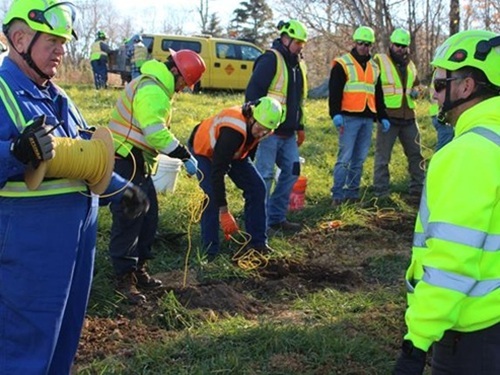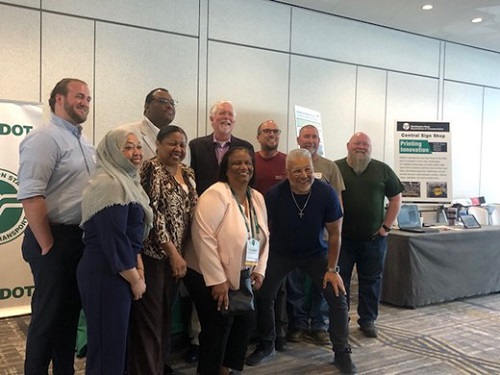During the American Association of State Transportation Officials 2023 Spring Meeting, held May 15-18 in Seattle, the Washington State Department of Transportation – which hosted the overall conference – put on a special “Innovation Day” event to share some of the new technologies and practices the agency has been working with.
[Above photo by WSDOT]
The one-day WSDOT “Innovations Day” event – detailed in an agency blog post – featured 13 interactive tables and displays staffed with agency personnel to talk about everything from new camera-based work zone safety initiatives to new transportation planning efforts built around diversity, equity, and inclusion or DEI strategies.
WSDOT said its Speed Safety Camera Systems allow the Washington State Patrol to remotely enforce reduced speed limits and hopefully change motorist behavior as they travel through highway work zones. In early 2023, the Washington State legislature approved the use of such work zone speed cameras and they will go live in July 2024.
WSDOT noted during the Innovation Day event that, according to crash data from the Washington State Patrol, almost 20 percent of the work zone collisions reported in 2020 statewide can be attributed to high speed alone, with higher speeds in work zones often leading to more severe injury and fatalities.
Where DEI is concerned, staff from the agency’s Office of Equity and Civil Rights promoted their work to advance the state’s Pro-Equity and Anti-Racism or “PEAR” work within transportation projects statewide. The agency is also bringing a more “inclusive lens” to planning future non-visual Americans with Disabilities Act or ADA-compliant pavement treatments for closed roadway crossings. Using the color red and visible, raised texture, closed crossings, pavement markings would provide a clearer delineation for people with all ranges of vision, the agency said.
WSDOT said its Development Division is partnering with the University of Washington and City of Seattle in a research study to determine best treatment options for crosswalks, gather feedback from the disability community on the overall effectiveness of the tactile application, and establish a future standard specification for closed crossing non-visual treatments. This work will involve applying non-visual pavement treatments to five intersections in the downtown corridor, WSDOT said.
The agency also highlighted its new approach to stormwater management; one that builds on environmental resilience with the Puget Sound Gateway SR 167 Riparian Restoration Program or RRP. The RRP is an integrated, holistic approach to meeting regulatory requirements in ways that provide greater environmental benefits than traditional mitigation methods.
In combination with associated roadside restoration areas, the RRP encompasses 176 acres on both sides of I-5 in Fife and Milton, as well as segments of the new SR 167 corridor in Tacoma and Pierce County, and seeks to restore land altered by previous uses, mitigate stream and wetland impacts, and provide floodplain management for other tributary streams in the project area.
WSDOT also showcased its Moveable Sign Fabrication System at the Innovation Day event; made up of a two-person sign installation team responsible for building and installing signs along highways in the region. This team designed a new adjustable table to help assemble and fabricate large sign panels more efficiently and with less physical demand.
 States
States
NCDOT Staff Participate in ‘Explosive’ Technical Training
December 19, 2025 States
States

